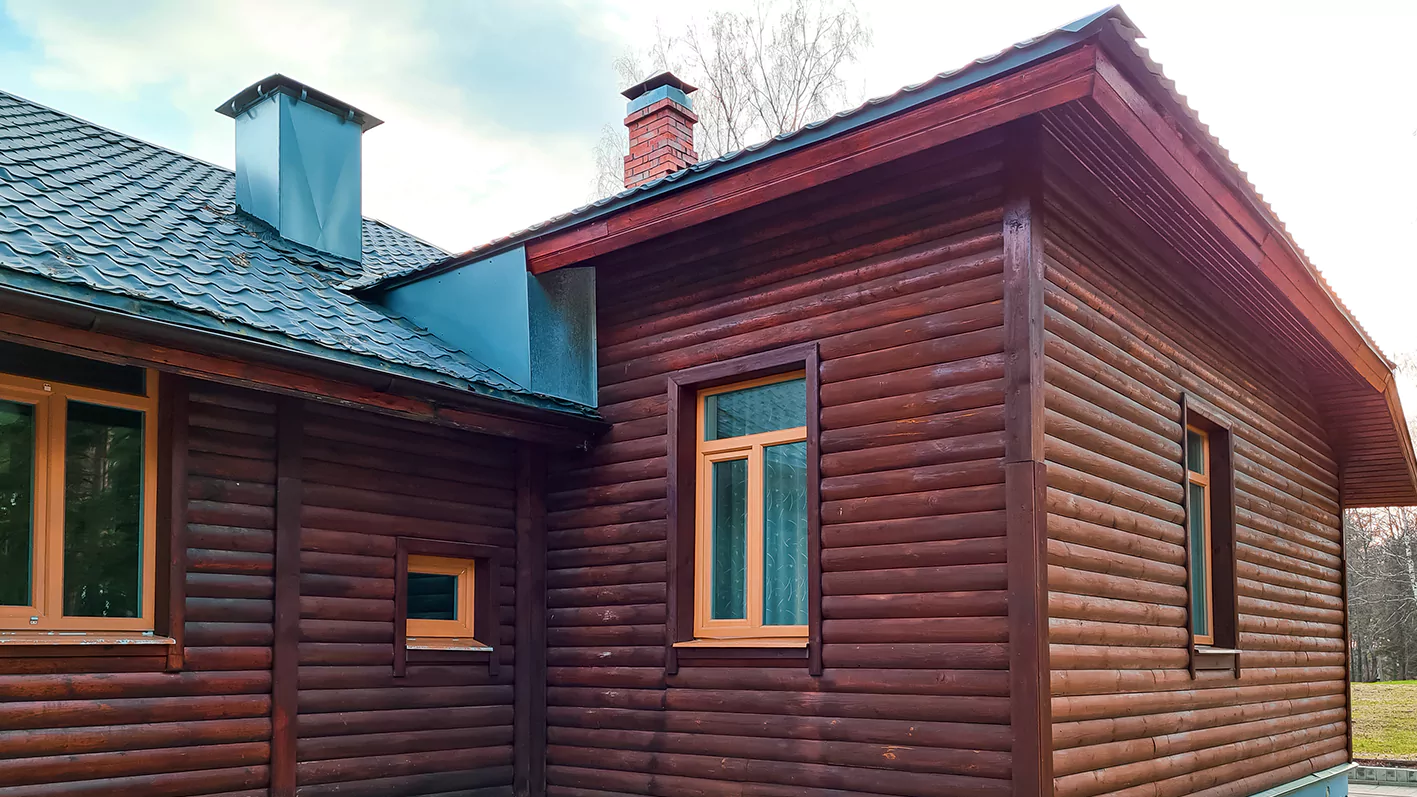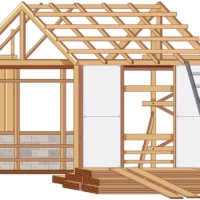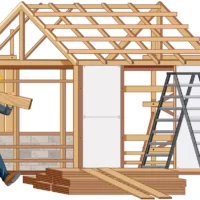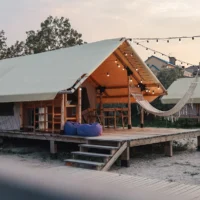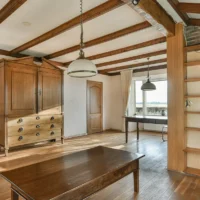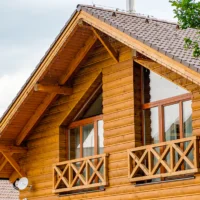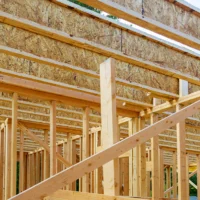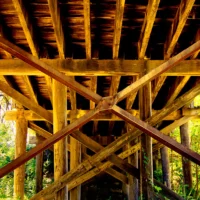Table of Contents
Introduction to D Log Siding
If you’ve ever dreamed of owning a cozy, rustic log cabin without the high cost and extensive maintenance of traditional full-log construction, D log siding might be your ideal solution. This popular siding option gives your home the authentic look of real log walls while providing modern construction benefits. Whether you’re building a new home or upgrading an existing one, understanding the features and advantages of D log siding can help you make a smart, long-term investment.
In this guide, we’ll explore what makes D log siding unique, why it’s a top choice for log home enthusiasts, and how it compares to other siding options.
What You Need to Know Before Choosing D Log Siding
Before jumping into a siding decision, it’s important to know the basics. D log siding is crafted from real logs milled into a “D” shape—flat on the inside and rounded on the outside. This profile mimics the look of traditional log homes while offering easier installation and better compatibility with modern building codes and framing techniques.
It’s also crucial to understand that not all D log siding products are created equal. Factors such as wood species, moisture content, milling precision, and finish quality will impact the final look, performance, and longevity of your siding. Choosing high-quality materials and a reputable supplier is essential to get the most from your investment.
Why D Log Siding is a Popular Choice for Log Homes
D log siding continues to gain popularity across North America, particularly among homeowners who want the authentic look of a log home without the challenges that come with full-log construction. This siding provides the same rustic charm while allowing for traditional framing, standard insulation, and easier utility routing inside the walls.
Additionally, D log siding offers a high degree of versatility, making it ideal for both exterior and interior applications. Whether you want to enhance your home’s curb appeal or bring warm, woodsy character to an interior space, D log siding provides timeless appeal.
What is D Log Siding?
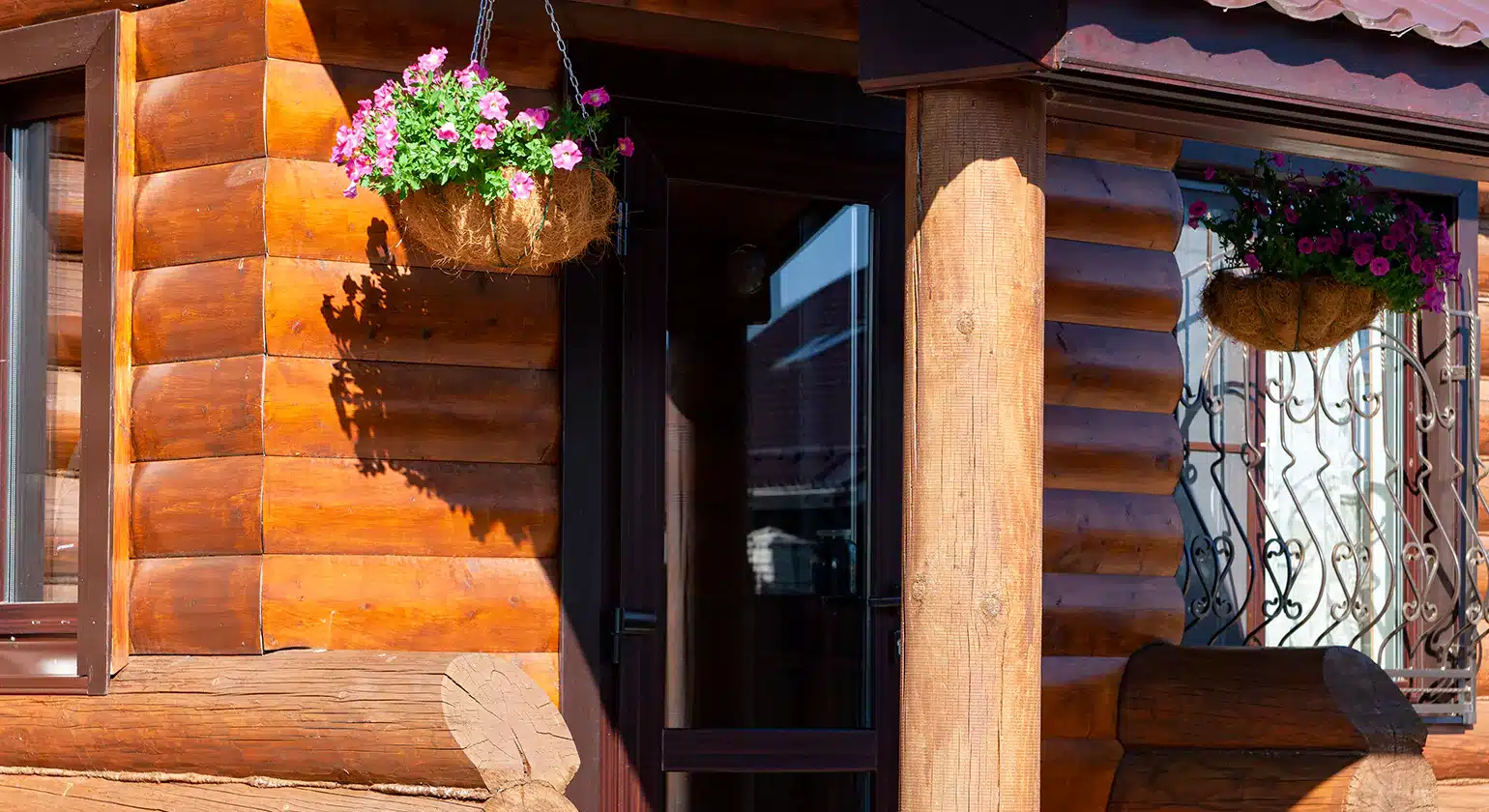
At its core, D log siding is a type of wooden siding designed to resemble a traditional log wall. The logs are milled into a semi-rounded profile that creates a “D” shape—flat on one side, rounded on the other. This profile makes it easier to install against standard wall framing, giving the appearance of a full log wall without requiring full-log construction.
Commonly made from pine or cedar, D log siding is available in a variety of thicknesses and profiles, including options with tongue-and-groove joints for a tight, weather-resistant seal.
Understanding the D Log Profile
The “D” in D log siding comes from the shape of the milled logs. The interior side of the siding is flat, allowing for easy attachment to studs or sheathing. The exterior side is curved, replicating the look of a traditional round log. This shape offers the visual appeal of a log cabin while keeping construction and maintenance much more manageable.
Some D log siding products also feature double tongue-and-groove edges, which help improve insulation, reduce air infiltration, and ensure a seamless fit between panels.
How D Log Siding Differs from Other Log Siding Types
There are several types of log siding available on the market, including half-log, quarter-log, and shiplap-style profiles. What makes D log siding stand out is its balance of aesthetic appeal and installation ease.
Unlike half-log siding, which may require more structural support and has more exposed surface area, D log siding is lighter and easier to work with. It also provides a more uniform fit than quarter-log siding and doesn’t rely on chinking or large gaps to complete the look, as is common with traditional full-log homes.
Compared to other types, D log siding offers a more efficient seal, which helps reduce maintenance needs and energy loss over time.
Benefits of D Log Siding
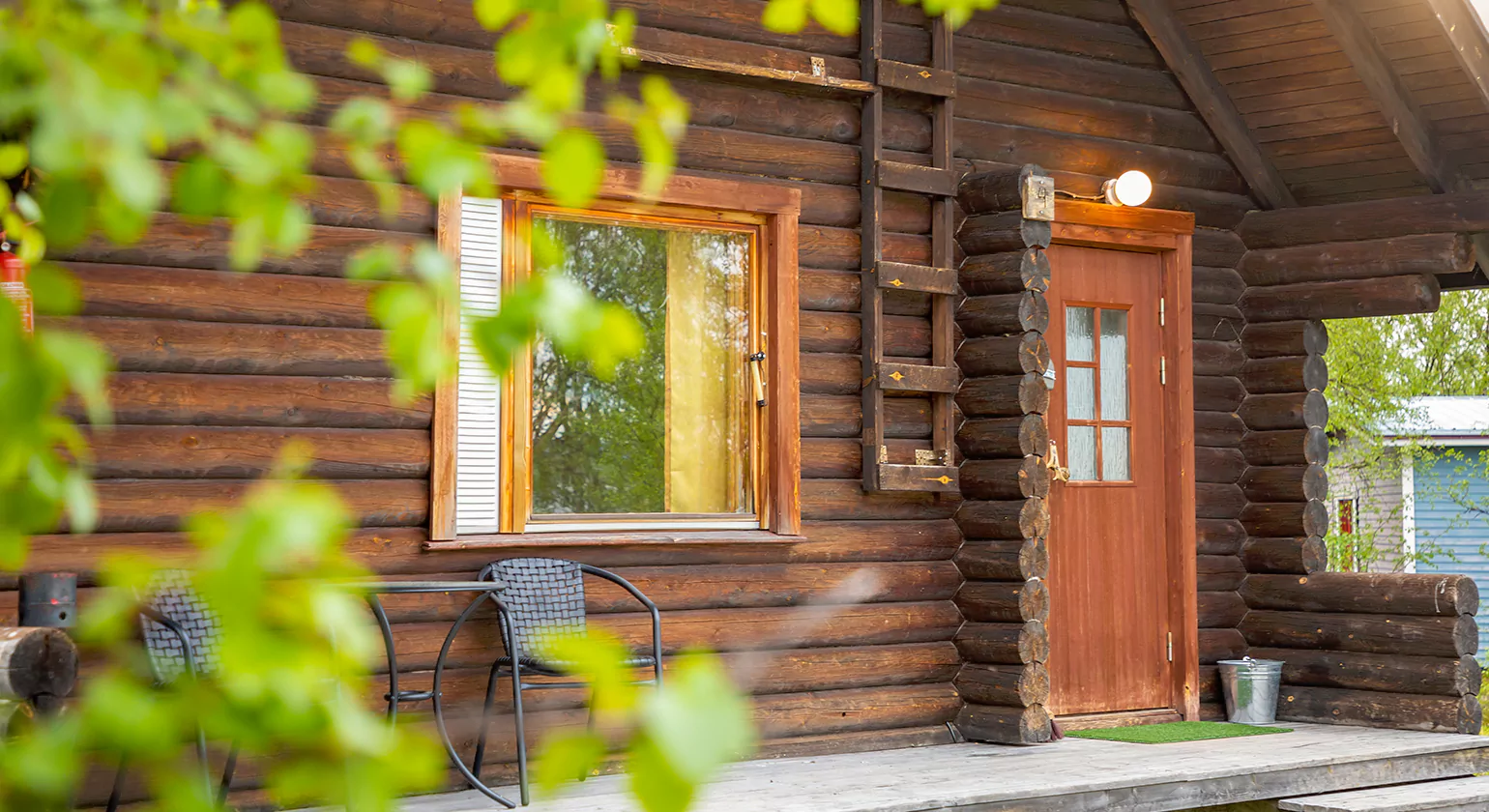
1.Authentic Log Cabin Appearance
One of the biggest appeals of D log siding is its visual authenticity. The rounded exterior face of each board recreates the look of traditional log construction, complete with wood grain patterns and natural knots that give your home a rustic, handcrafted appearance. When stained and sealed properly, D log siding can rival the charm of any full-log structure.
2.Structural Advantages and Durability
D log siding is not only beautiful—it’s incredibly durable when installed and maintained correctly. The flat interior side ensures a snug fit to modern framing systems, while the tongue-and-groove design helps prevent air and moisture infiltration. High-quality D log siding is milled from seasoned wood, which minimizes warping, cracking, and settling.
When paired with proper finishes, this siding can withstand harsh weather conditions, resist pests, and remain structurally sound for decades.
3.Energy Efficiency and Insulation Benefits
Thanks to its tight-fitting design, D log siding contributes to energy efficiency by reducing thermal bridging and air leakage. Unlike traditional full-log homes, which often struggle with insulation, D log siding can be installed over standard framed walls that already include modern insulation materials like fiberglass or spray foam. This combination results in better energy performance and lower heating and cooling costs.
4.Ease of Installation Compared to Traditional Logs
D log siding is far easier to install than full-round logs or traditional log construction methods. Contractors can attach the flat backside directly to OSB, plywood, or stud framing, allowing for faster and more affordable builds. This ease of installation also makes D log siding a great option for DIY homeowners or remodeling projects, where full-log walls would be too complex or expensive.
Types of D Log Siding Materials
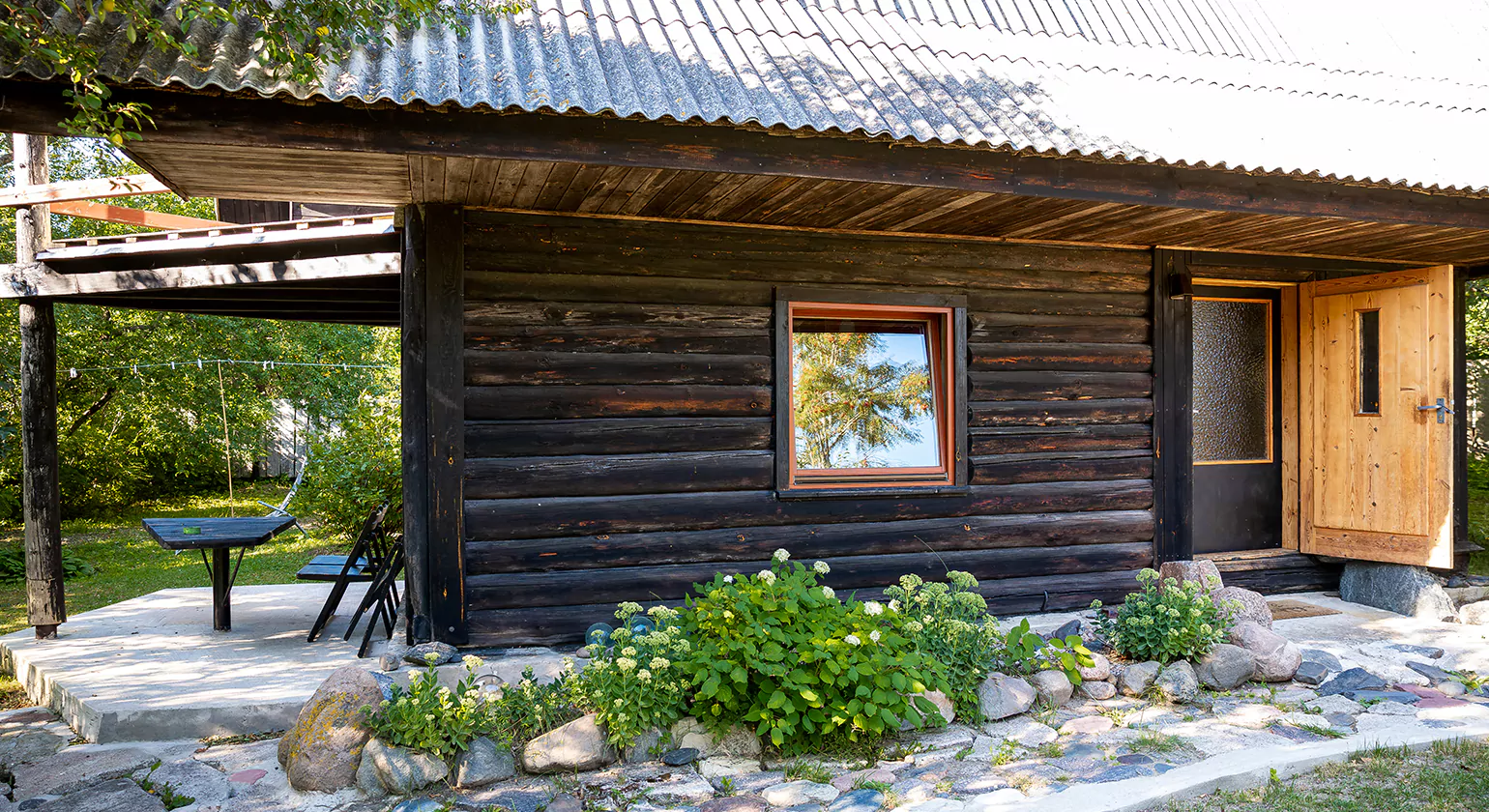
Choosing the right material for your D log siding depends on your budget, climate, and desired look. Let’s look at the most common options:
Wood D Log Siding: Pros and Cons
Wood is the traditional and most popular material for D log siding. Common species include pine, cedar, and fir.
Pros:
- Authentic appearance with natural wood grain
- Customizable with stains, finishes, and textures
- Eco-friendly when sourced sustainably
- Can be used for interior and exterior applications
Cons:
- Requires regular maintenance (staining, sealing)
- Susceptible to insects and rot if untreated
- Costs more long-term due to upkeep
- Can shrink or swell with moisture changes
Wood D log siding is best for those who prioritize authenticity and aesthetics over low maintenance.
Vinyl and Composite Options
Vinyl and engineered wood (composite) are alternatives for homeowners who want a low-maintenance option.
Vinyl D Log Siding:
- Made to mimic the rounded shape and texture of real logs
- Pros: Inexpensive, low maintenance, resistant to rot/insects
- Cons: Lacks authentic grain, can fade over time, less durable
Composite D Log Siding:
- Made from compressed wood fibers and resins
- Pros: More realistic look than vinyl, easier to maintain than real wood
- Cons: Still requires occasional sealing, more costly than vinyl
Steel and Concrete D Log Siding Alternatives
For extreme durability, some homeowners choose steel or concrete-based D log siding systems.
- Steel D Log Siding: Ultra-durable and fire-resistant, but very industrial-looking and expensive.
- Concrete Log Siding: Textured to look like wood, extremely durable, insect and rot-proof.
These alternatives are great for commercial applications or homes in harsh climates, though they sacrifice the natural charm of real wood.
How D Logs are Milled and Manufactured
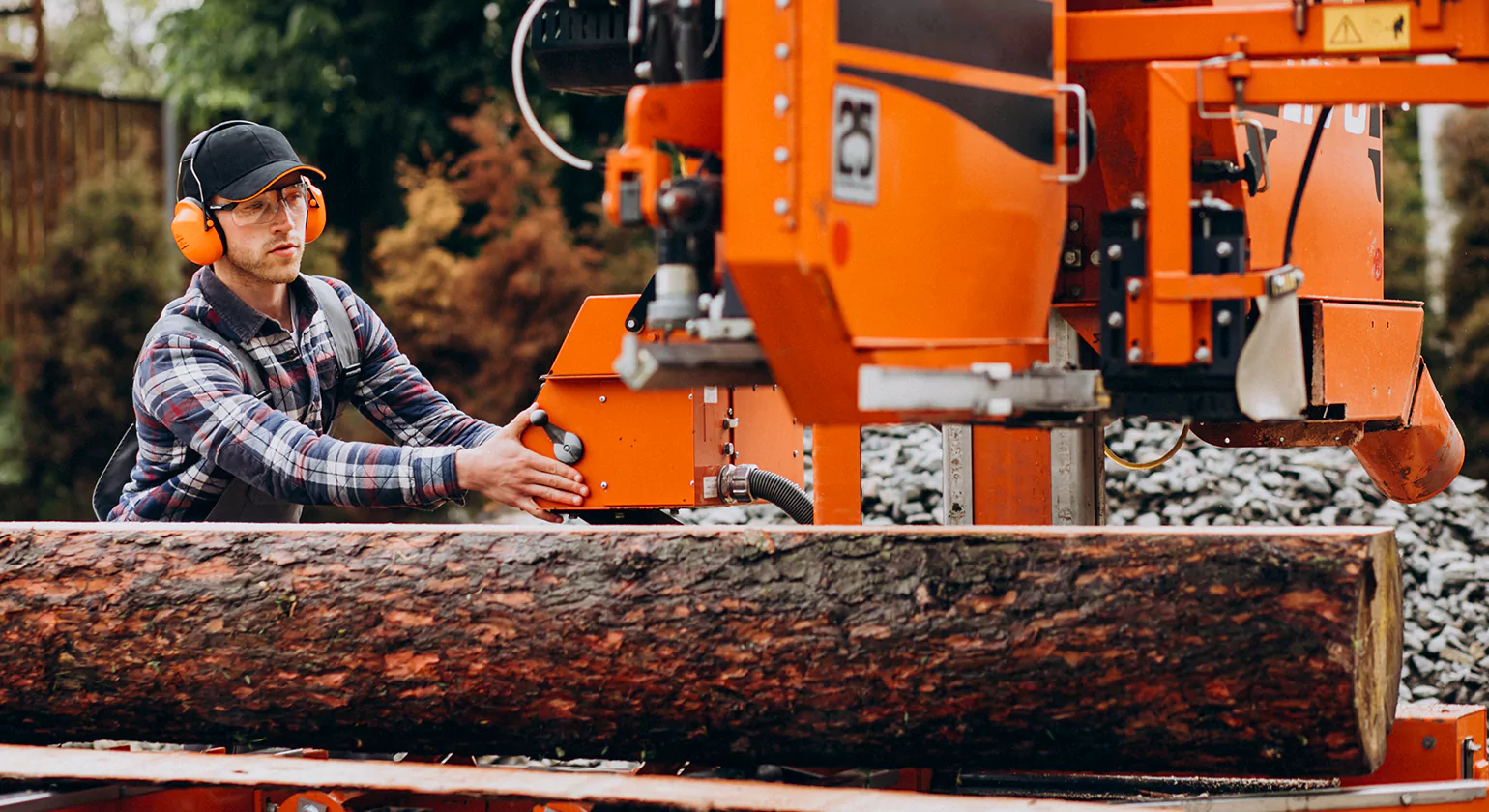
The manufacturing process of D log siding directly impacts its fit, appearance, and weather resistance. High-quality milling ensures tight seams and prevents long-term issues like air gaps, warping, and water damage.
Milling Process Overview
The logs are first dried to reduce moisture content, which helps prevent warping and cracking. After drying, logs are:
- Debarked and cleaned
- Cut into a “D” profile – one side flat, one side rounded
- Milled with tongue-and-groove edges to interlock tightly
- Sometimes finished with drip edges to guide water away from the structure
Precision milling is essential. Logs should be milled to within 1/16 of an inch to ensure seamless installation.
Quality Standards for D Logs
Look for the following to ensure you’re buying high-quality D log siding:
- Kiln-dried to 14–15% moisture content
- Milled from solid, clear-grain timber
- No green or partially dried wood
- Straight and consistent profile throughout the board length
Ask your supplier for grading information and whether logs have been treated for pests or mold before delivery.
Double Tongue and Groove Features
One of the most critical upgrades in modern D log siding is the double tongue-and-groove system. This feature:
- Creates a stronger seal between boards
- Helps prevent air infiltration and water intrusion
- Increases energy efficiency
- Ensures tight, even alignment along the entire wall
Double tongue-and-groove systems are a hallmark of premium D log siding and a worthwhile investment.
Installation Process for D Log Siding

Proper installation is key to maximizing the lifespan and performance of your D log siding. While professionals are often recommended, informed homeowners and skilled DIYers can also achieve great results.
Preparing Your Home’s Exterior
- Inspect the framing or sheathing for level, dry, and structurally sound surfaces.
- Apply a moisture barrier or house wrap to protect against humidity and precipitation.
- Add any necessary furring strips to ensure ventilation behind the siding (especially in humid climates).
Step-by-Step Installation Guide
- Start from the bottom: Install corner posts and bottom siding row first.
- Use screws or ring-shank nails: Fasten through the tongue at an angle to hide fasteners.
- Stagger joints: For better strength and a natural look.
- Seal all joints: Apply a bead of caulk or butyl tape in the groove to create a weather-tight seal.
- Work upward, locking each board into the one below.
Use a level frequently to ensure straight, even rows, especially on large walls.
Tips for Achieving a Tight Seal and Weatherproofing
- Use stainless steel or galvanized fasteners to prevent rust stains.
- Apply a high-quality stain or sealer within 30 days of installation.
- Re-stain or re-seal every 2–5 years, depending on your climate.
- Install drip caps over doors and windows to deflect water.
- Inspect annually for gaps, cracks, or insect activity, and address issues quickly.
Maintenance Tips for D Log Siding
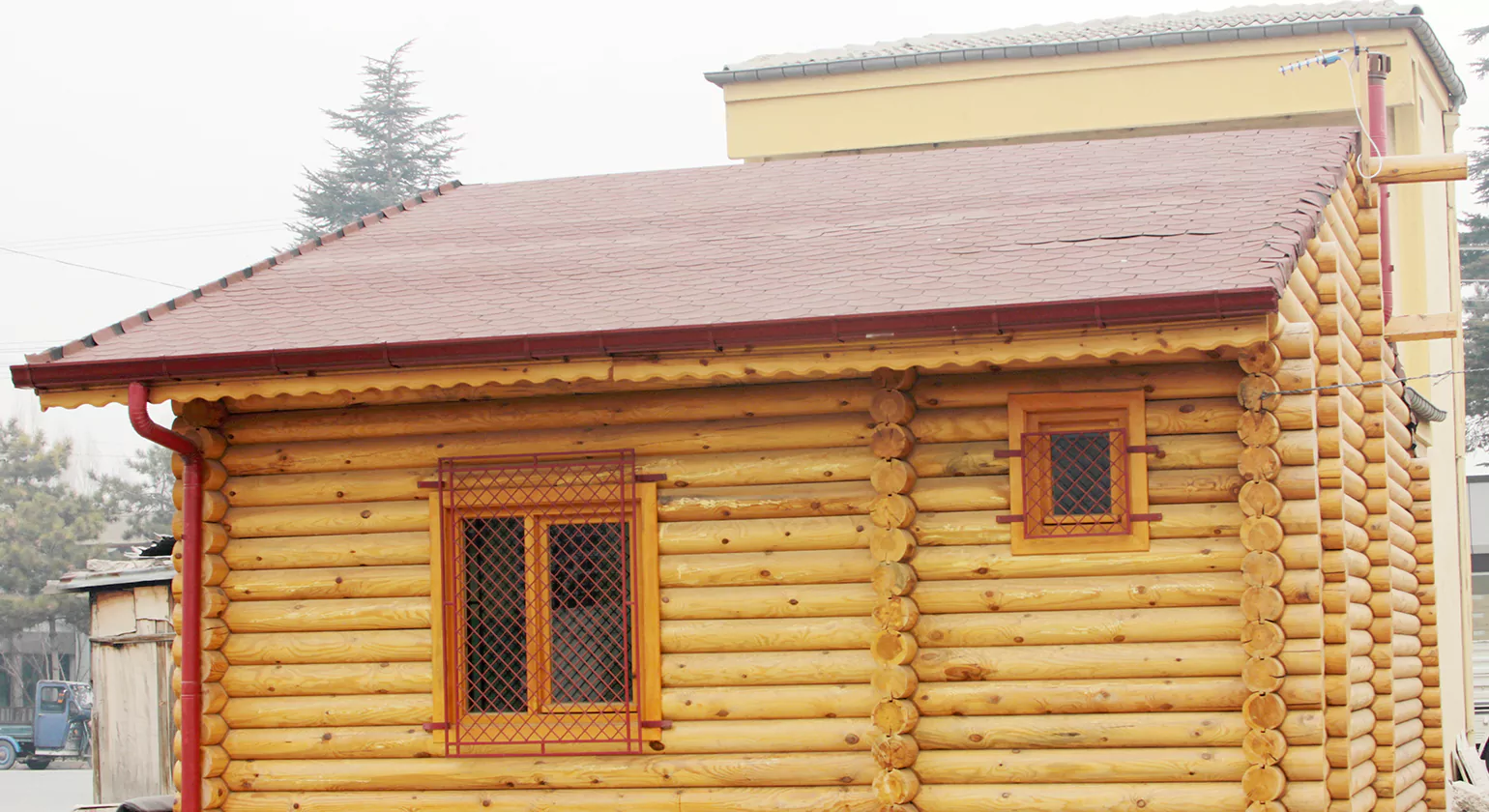
Regular maintenance is the key to preserving the beauty and durability of your D log siding. Because it’s exposed to the elements, your siding will require ongoing care to resist moisture, pests, UV rays, and cracking.
Routine Care and Wood Treatments
Start with the basics:
- Clean your siding annually with a log wash or gentle soap and water to remove dirt, mold, and mildew.
- Inspect the surface for damage or color fading.
- Apply a high-quality wood stain and sealant every 3–5 years, or as needed based on your climate.
Oil-based stains penetrate deeper and offer better UV protection than water-based options. Choose a product that includes fungicides and UV inhibitors for maximum longevity.
Identifying and Repairing Cracks and Gaps
Even well-installed D log siding can develop minor cracks, checks, or gaps over time. Here’s how to handle them:
- Cracks less than 1/8-inch wide are generally cosmetic seal them with a matching log caulk.
- For larger gaps or separation, inspect for water intrusion or insect nests before filling.
- Replace or re-secure loose siding boards immediately to prevent further damage.
- Use butyl caulk or chinking in areas prone to movement for added flexibility.
Timely repair of gaps not only maintains appearance but also preserves insulation and prevents pests from entering.
Seasonal Maintenance Checklist
Here’s a simple seasonal guide to ensure your D log siding stays in top shape:
Spring:
- Wash siding to remove winter grime.
- Reinspect water damage or mold.
- Apply touch-up stain if needed.
Summer:
- Trim back vegetation to prevent moisture buildup.
- Inspect caulking and seals around windows and doors.
Fall:
- Prepare for winter by checking gutters, overhangs, and flashing.
- Touch up stains or sealers in high-sun areas.
Winter:
- Remove heavy snow from lower walls.
- Check interior walls for cold spots, which may indicate insulation or sealing issues.
Comparing D Log Siding with Other Log Siding Profiles
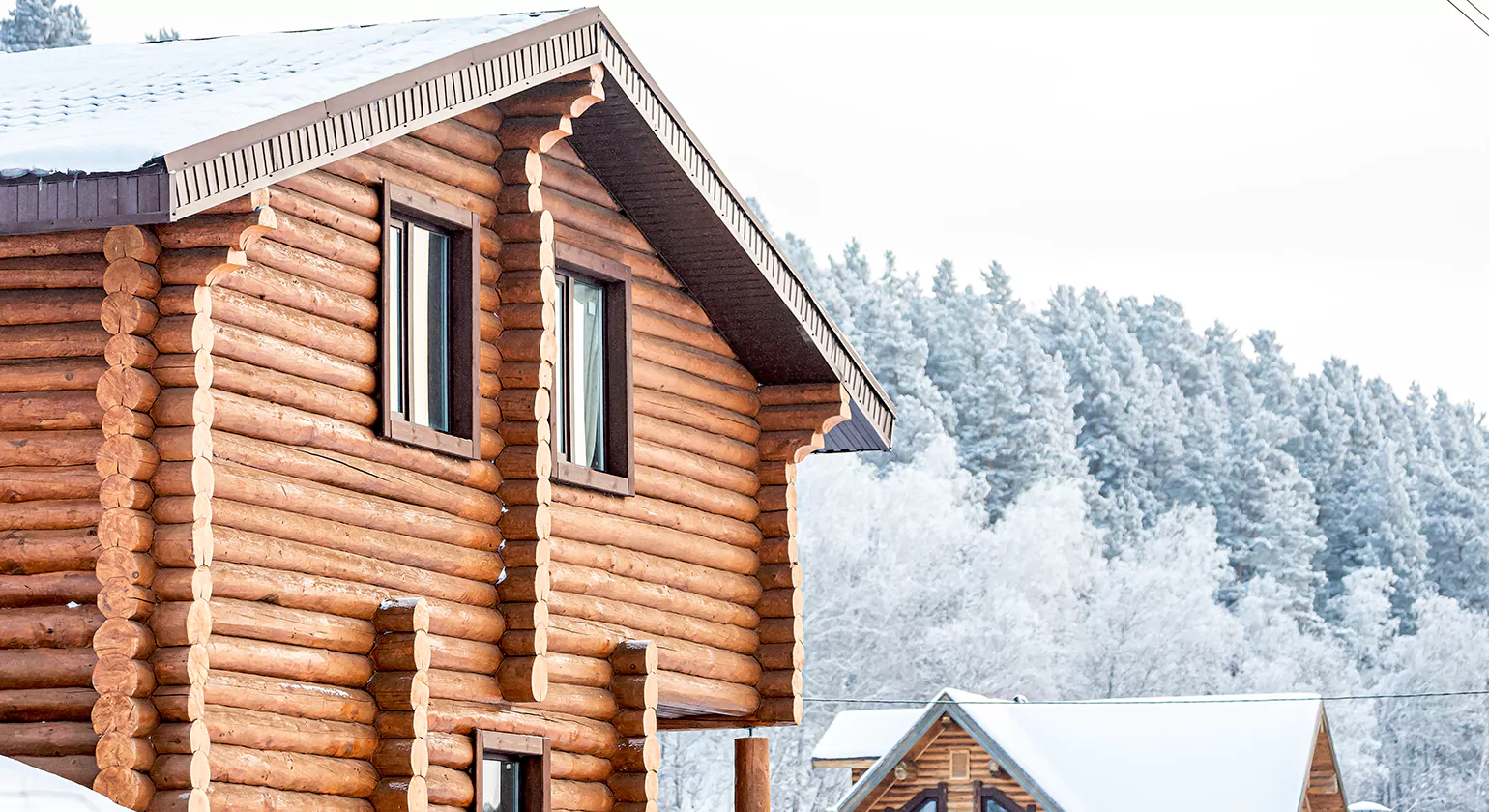
When selecting a log siding profile, homeowners often compare D logs vs. half logs vs. quarter logs and evaluate the differences in installation and appearance.
D Logs vs. Half Logs vs. Quarter Logs
- D Log Siding: Features a rounded exterior and flat interior, mimicking full logs while offering easier installation and more efficient insulation. Ideal for those who want the classic cabin to look without structural complications.
- Half Log Siding: Thicker than D logs and often heavier, it provides a more robust appearance but requires more support and can be more expensive.
- Quarter Log Siding: Thinner and more budget-friendly, this option is easier to install but lacks the depth and realism of D or half logs.
D logs strike the perfect balance between aesthetics, durability, and ease of use.
Tongue and Groove vs. Chink Joint Styles
Tongue and groove D log siding has milled interlocking edges for a tight, weatherproof fit, eliminating the need for chinking.
Chink joint siding uses flat log faces with spaces intentionally left between logs, which are then filled with a flexible chinking compound. This creates a more traditional, old-fashioned look.
Benefits of Tongue and Groove:
- Faster and easier to install
- Better weather resistance
- Cleaner, seamless appearance
Choose tongue and groove if you want lower maintenance and improved energy efficiency. Opt for chink-style if your design leans toward rustic or historic aesthetics.
Cost Considerations for D Log Siding
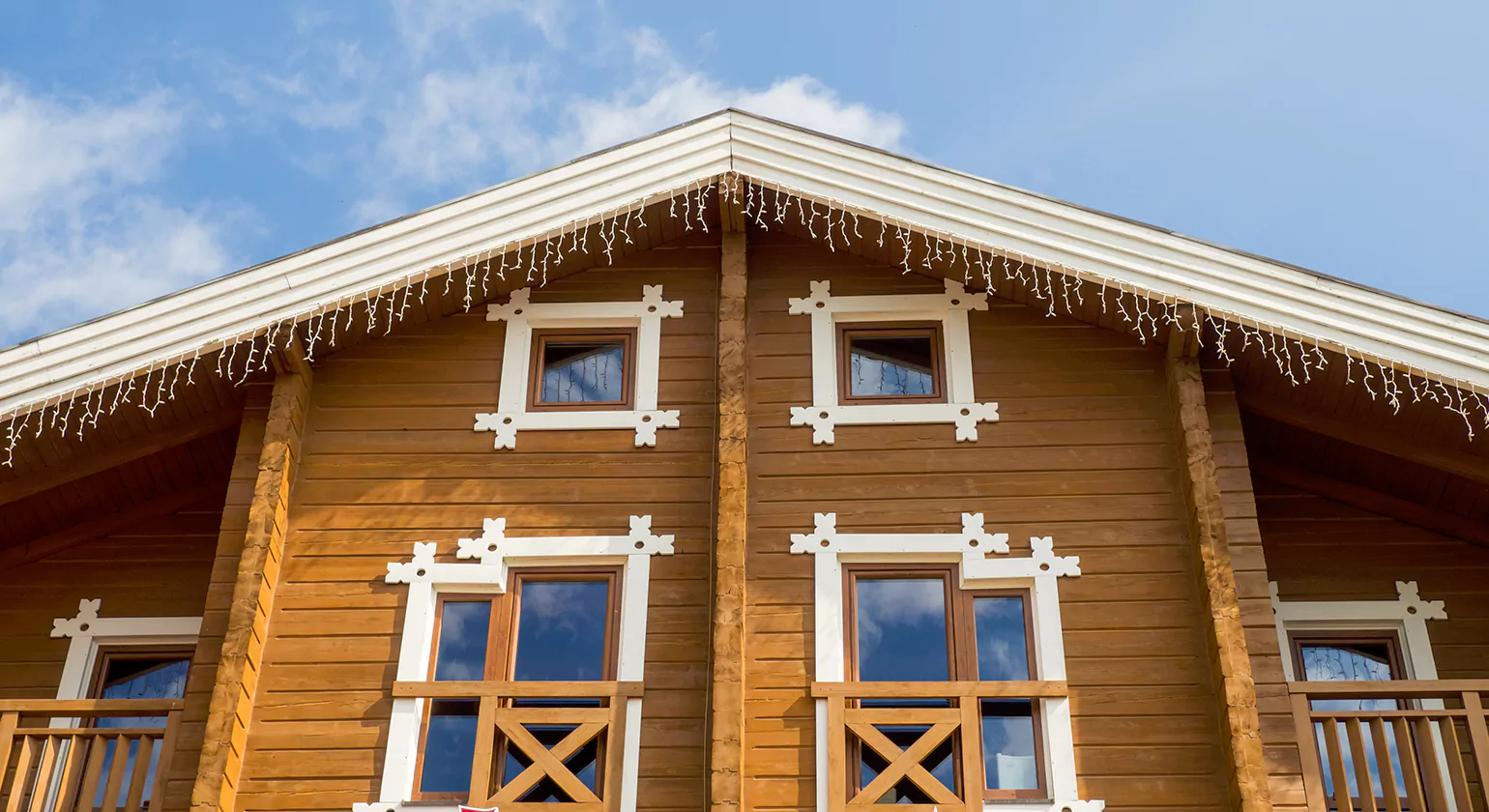
Budgeting is an important part of any home improvement project. D log siding offers good value, but costs can vary based on material, labor, and maintenance requirements.
Average Pricing by Material
Here’s a general breakdown of average D log siding prices:
- Pine D Log Siding: $2.50 – $5.00 per square foot
- Cedar D Log Siding: $4.00 – $7.50 per square foot
- Vinyl D Log Siding: $2.00 – $3.50 per square foot
- Composite/Engineered Wood: $3.50 – $6.00 per square foot
- Steel/Concrete Alternatives: $7.00 – $12.00+ per square foot
Natural wood costs more upfront but offers authenticity and resale appeal.
Installation and Maintenance Costs
- Installation Labor: $3.00 – $7.00 per square foot depending on region and wall complexity.
- Maintenance (Every 3–5 Years):
- Stain & Seal: $1.00 – $2.50 per sq. ft.
- Cleaning & Inspection: $300 – $600 annually (for professional service)
- Minor Repairs: Varies by extent, usually $100 – $500
Pro Tip: DIY installation and staining can cut costs but requires skill and the right tools.
Long-Term Value and ROI
Though initial costs can be higher than vinyl or aluminum, D log siding pays off in the long run:
- Boosts curb appeal and resale value
- Enhances energy efficiency, reducing heating and cooling bills
- Lasts for 30+ years with proper maintenance
- Appeals to a niche but growing market of log home enthusiasts
The return on investment (ROI) for log-style siding is strong, especially when maintained well and used in cabins, mountain homes, and custom residences.
Conclusion: Why D Log Siding Is a Smart Long-Term Investment
D log siding combines the timeless appeal of a traditional log cabin with modern durability and efficiency. Its unique profile offers a natural wood look, easier installation, and excellent insulation. With material options like wood, vinyl, and steel, it suits various budgets and climates. Properly milled D logs with double tongue and groove ensure a tight, weather-resistant seal. Routine maintenance and seasonal care keep your siding looking great for years. Compared to other log siding types, D logs provide strong ROI and long-term value. For those seeking rustic charm with practical benefits, D log siding is a smart, lasting investment.
Know more>>> How to Install and Maintain Half Log Siding
FAQ'S
1. What is D log siding?
D log siding is a type of exterior wood siding shaped like the letter “D,” featuring a flat interior and rounded exterior. It gives homes a traditional log cabin appearance while offering easier installation and better insulation than full logs.
2. Is D log siding made from real wood?
Yes, D log siding is commonly made from real wood such as pine or cedar. However, there are also vinyl, composite, and steel alternatives available for added durability and reduced maintenance.
3. How does D log siding compare to full logs?
D log siding is lighter, easier to install, and more affordable than full logs. It provides the same rustic look with fewer structural challenges, making it a popular choice for new builds and remodels.
4. What are the maintenance requirements for D log siding?
Maintenance includes periodic staining or sealing, checking for cracks or gaps, and following seasonal care routines to protect against moisture, UV rays, and pests.
5. Is D log siding energy efficient?
Yes. With proper installation, especially with double tongue and groove joints, D log siding provides excellent insulation and energy efficiency, helping to reduce heating and cooling costs.
6. Can D log siding withstand harsh weather conditions?
Absolutely. When properly installed and maintained, D log siding is highly resistant to wind, rain, snow, and sun damage. The interlocking design enhances structural strength and weather resistance.
7. How much does D log siding cost?
Prices vary based on material. Wood D log siding can range from $3 to $8 per square foot, while vinyl and steel options may differ. Installation and maintenance costs should also be factored into the overall budget.
8. Can I install D log siding myself?
DIY installation is possible for experienced homeowners, but professional installation is recommended to ensure a tight seal, proper alignment, and long-term performance.
9. Does D log siding come pre-treated?
Some D log siding products come pre-stained or sealed, while others require treatment after installation. Always check with your supplier for specific product details.
10. What’s the difference between D logs, half logs, and quarter logs?
D logs have one flat side and one rounded side. Half logs are split down the middle with curved outer faces, and quarter logs are thinner with less profile depth. D logs offer the best balance between aesthetics, performance, and ease of installation.

